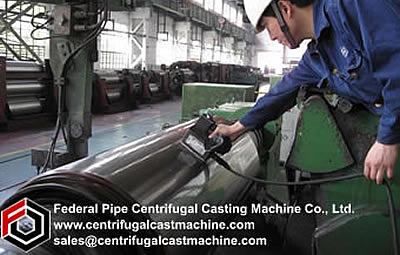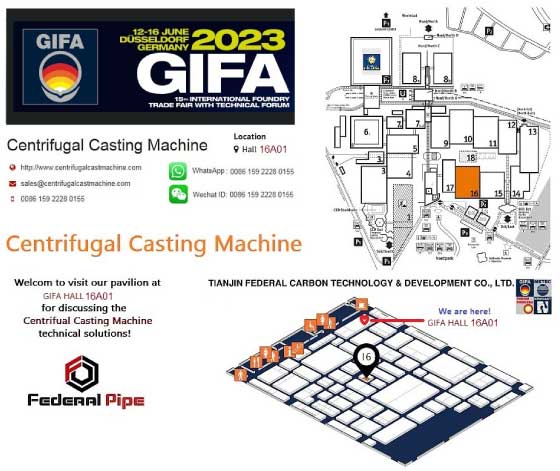Centrifugal casting as it is now done
Modifications and adaptations of the principle of centrifugal casting also exist under the various headings of centrifuge casting, semicentrifugal cast ‐ing and pressure casting. Today, the technique of centrifugal casting is used a great deal in combination with the famous and age‐old lost‐wax (cire perdue) process. Centrifugal casting as it is now done is more aptly called centrifuge casting. True centrifugal casting is used primarily for articles with hollow cores. 
• This method is identical to other lost‐wax modeling and molding procedures except that the mold‐is attached to a revolving shaft which rotates the entire mold on an angle. The molten metal enters the mold from a stationary crucible position above the rotating mold, and flows down into the pattern chamber where it is forced centrifugally against the inner walls until it solidifies to the thickness desired for the finished hollow casting. (Fig. 77)
• Another modification of these various centrifugal casting processes and one which makes possible a greater degree of refinement in articles cast by the lost ‐wax process is the pressure casting technique. In this procedure, the upper portion of the machine is placed over the mold that is to receive the molten metal. As this is being done, a sufficient amount of air pressure is applied to the mold to force out the gases and allow the metal to flow in ‐to even the most intricate details incorporated in the'pattern chamber. The use of pressure casting machines using this technique successfully produces very intricate castings in precious metals

